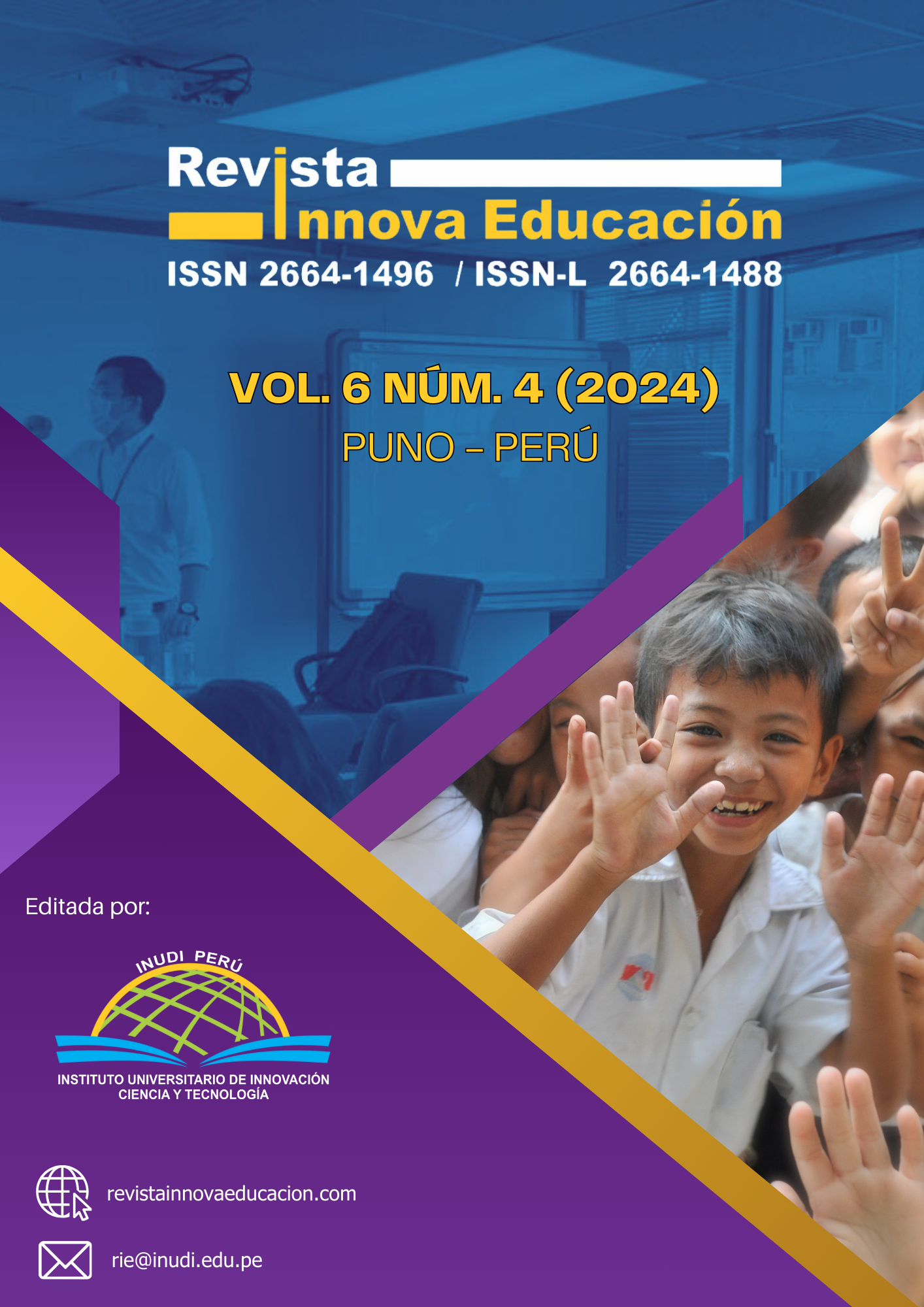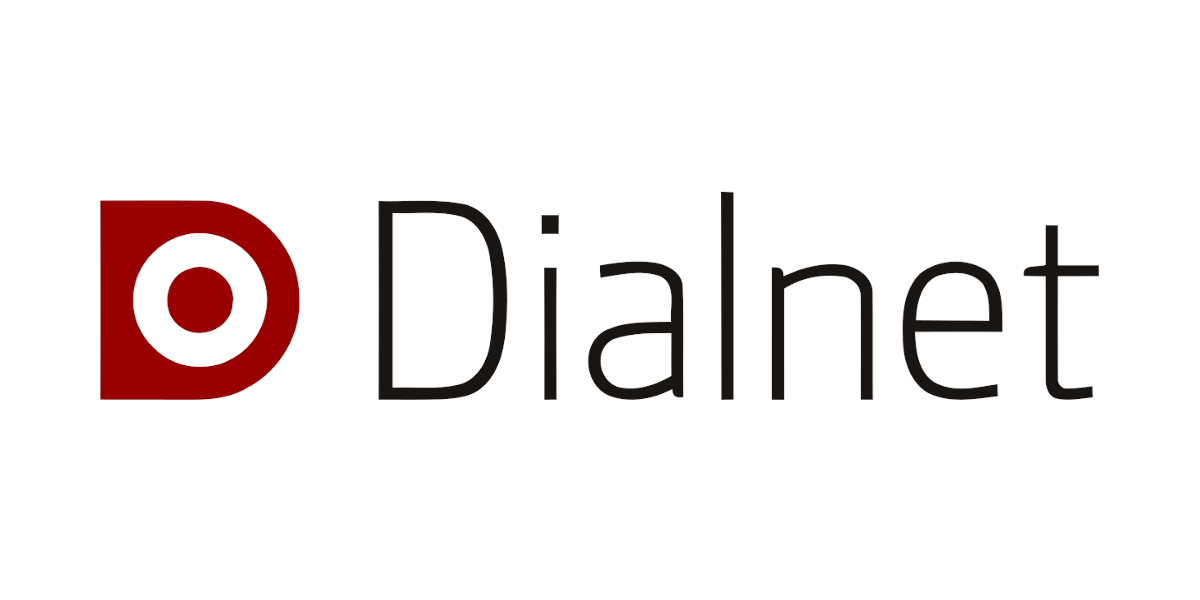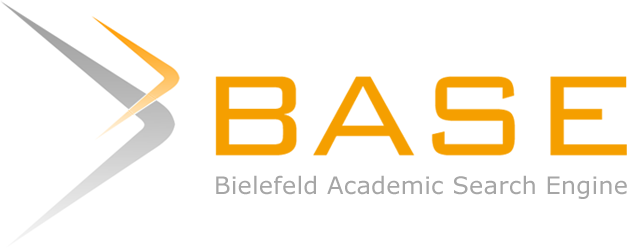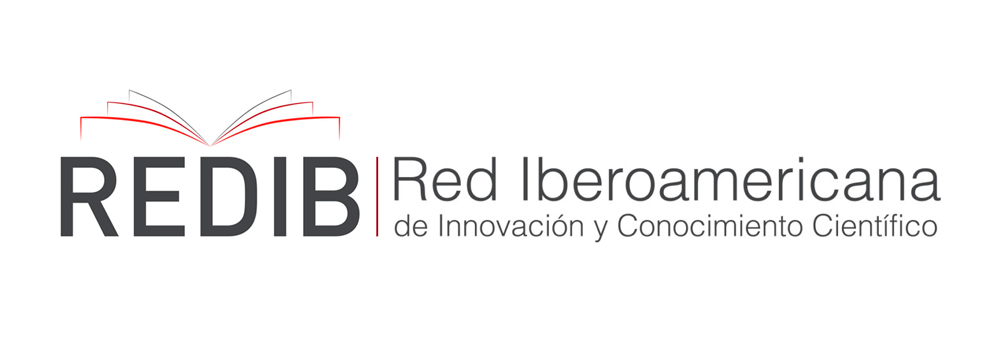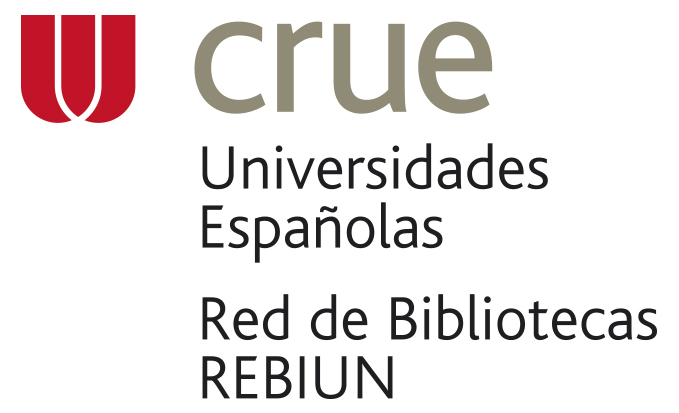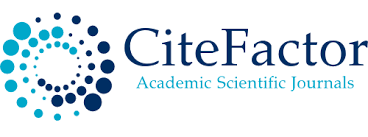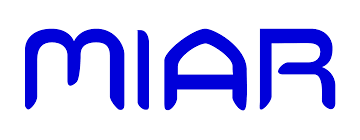Software educativo en el rendimiento académico de los estudiantes de la Universidad Estatal Amazónica, Ecuador
DOI:
https://doi.org/10.35622/j.rie.2024.04.003Palabras clave:
evaluación del estudiante, innovación en enseñanza, rendimiento académico, software educativo, tecnología educacionalResumen
El bajo rendimiento en Matemática I en la Universidad Estatal Amazónica (UEA) evidenció la necesidad de implementar soluciones tecnológicas para optimizar el aprendizaje. Ante ello, el estudio tuvo como objetivo evaluar el impacto de un software educativo en el rendimiento académico de los estudiantes de primer semestre. Bajo un diseño cuasi-experimental de un total de 121 participantes se seleccionó un grupo experimental (GE) con 29 estudiantes y un grupo control (GC) con 31, los cuales se utilizaron sin alteraciones. A los participantes se les aplicaron cuestionarios y pruebas escritas, además de un primer acercamiento por medio de una entrevista al director de la carrera. Entre los métodos de análisis incluyeron pruebas de Fisher-Snedecor y t-Student para realizar las comparaciones entre los grupos. Como resultados, ambos grupos demostraron niveles homogéneos en el Pretest inicial (media de 7,4140 y 7,0323, respectivamente), garantizando condiciones equitativas antes de la intervención. Al finalizar, el GE alcanzó una media significativamente superior en el Postest (14,0690 frente a 10,4194 del GC), mostrando un impacto positivo del software en el aprendizaje. Además, el 86,21% de los estudiantes percibió mayor motivación y el 79,31% destacó mejoras en la interacción docente-estudiante. Estos resultados implican que el software educativo es efectivo para superar las limitaciones de los métodos tradicionales. Para aplicarlo en otros contextos, es esencial garantizar infraestructura tecnológica adecuada, capacitar a los docentes en competencias digitales y diseñar contenidos adaptados a las necesidades específicas de los estudiantes, considerando tanto su nivel de preparación inicial como sus estilos de aprendizaje.
Referencias
Aguhayon, H., Tingson, R., & Pentang, J. (2023). Addressing students learning gaps in mathematics through differentiated instruction. International Journal of Educational Management and Development Studies, 4, 69-87. https://doi.org/10.53378/352967 DOI: https://doi.org/10.53378/352967
Almerich, G., Gargallo-Jaquotot, P., & Suárez-Rodríguez, J. (2024). ICT integration by teachers: a basic model of ICT use, pedagogical beliefs, and personal and contextual factors. Teaching and Teacher Education, 145, 1-19. https://doi.org/10.1016/j.tate.2024.104617 DOI: https://doi.org/10.1016/j.tate.2024.104617
Asare, S., Agyeman, D., Nyarko, J., Opoku-Mensah, N., Fokuo, M., Caroline, O.-M., & Asamoah, R. (2023). The role of ICT in teaching and learning mathematics at college of education: a systematic review. 14(13), 70-77. https://doi.org/10.7176/JEP/14-12-06 DOI: https://doi.org/10.7176/JEP/14-12-06
Bernard, R. M., Borokhovski, E., Schmid, R. F., & Tamim, R. M. (2018). Gauging the effectiveness of educational technology integration in education: what the best-quality meta-analyses tell us. In M. J. Spector, B. B. Lockee, & M. D. Childress (Eds.), Learning, Design, and Technology: An International Compendium of Theory, Research, Practice, and Policy (pp. 1-25). Springer International Publishing. https://doi.org/10.1007/978-3-319-17727-4_109-2 DOI: https://doi.org/10.1007/978-3-319-17727-4_109-2
Bond, M., Marín, V. I., Dolch, C., Bedenlier, S., & Zawacki-Richter, O. (2018). Digital transformation in German higher education: student and teacher perceptions and usage of digital media. International Journal of Educational Technology in Higher Education, 15(1), 1-20. https://doi.org/10.1186/s41239-018-0130-1 DOI: https://doi.org/10.1186/s41239-018-0130-1
Cirneanu, A. L., & Moldoveanu, C.-E. (2024). Use of digital technology in integrated mathematics education. Applied System Innovation, 7(4), 66. https://doi.org/10.3390/asi7040066 DOI: https://doi.org/10.3390/asi7040066
Clark-Wilson, A., Robutti, O., & Thomas, M. (2020). Teaching with digital technology. ZDM, 52(7), 1223-1242. https://doi.org/10.1007/s11858-020-01196-0 DOI: https://doi.org/10.1007/s11858-020-01196-0
English, L. D., & Watson, J. (2018). Modelling with authentic data in sixth grade. ZDM, 50(1), 103-115. https://doi.org/10.1007/s11858-017-0896-y DOI: https://doi.org/10.1007/s11858-017-0896-y
Fagerholm, F., Hellas, A., Luukkainen, M., Kyllönen, K., Yaman, S., & Mäenpää, H. (2018). Designing and implementing an environment for software start-up education: Patterns and anti-patterns. Journal of Systems and Software, 146, 1-13. https://doi.org/10.1016/j.jss.2018.08.060 DOI: https://doi.org/10.1016/j.jss.2018.08.060
Fernández, I., Riveros, V., & Montiel, G. (2017). Software educativo y las funciones matemáticas. Una estrategia de apropiación. Omnia, 23(1), 9-19. https://www.redalyc.org/articulo.oa?id=73753475002
García-Holgado, A., & García-Peñalvo, F. J. (2022). A model for bridging the gender gap in STEM in higher education institutions. In F. J. García-Peñalvo, A. García-Holgado, A. Dominguez, & J. Pascual (Eds.), Women in STEM in Higher Education: Good Practices of Attraction, Access and Retainment in Higher Education (pp. 1-19). Springer Nature Singapore. https://doi.org/10.1007/978-981-19-1552-9_1 DOI: https://doi.org/10.1007/978-981-19-1552-9_1
Goswami, S., Uddin, M. S., & Islam, M. (2020). Implementation of active learning for ICT education in schools. International Journal of Innovative Science and Research Technology, 5, 455-459. https://doi.org/10.38124/IJISRT20SEP236 DOI: https://doi.org/10.38124/IJISRT20SEP236
Hatisaru, V. (2023). Mathematical connections established in the teaching of functions. Teaching Mathematics and its Applications: An International Journal of the IMA, 42(3), 207-227. https://doi.org/10.1093/teamat/hrac013 DOI: https://doi.org/10.1093/teamat/hrac013
Hillmayr, D., Ziernwald, L., Reinhold, F., Hofer, S. I., & Reiss, K. M. (2020). The potential of digital tools to enhance mathematics and science learning in secondary schools: A context-specific meta-analysis. Computers & Education, 153, 1-25. https://doi.org/10.1016/j.compedu.2020.103897 DOI: https://doi.org/10.1016/j.compedu.2020.103897
Holtsnider, B., Wheeler, T., Stragand, G., & Gee, J. (2010). The Problem: Why Software Projects Fail. In B. Holtsnider, T. Wheeler, G. Stragand, & J. Gee (Eds.), Agile Development & Business Goals (pp. 11-29). Morgan Kaufmann. https://doi.org/10.1016/B978-0-12-381520-0.00002-3 DOI: https://doi.org/10.1016/B978-0-12-381520-0.00002-3
Joshi, D., Khanal, B., & Sharma Chapai, K. (2023). Effect of mathematics teachers' problems in teaching equation, figure, drawing symbols and use of software on mathematical content instruction. Journal of Fine Arts Campus, 4, 11-20. https://doi.org/10.3126/jfac.v4i2.54835 DOI: https://doi.org/10.3126/jfac.v4i2.54835
Kim, C., Kim, M. K., Lee, C., Spector, J. M., & DeMeester, K. (2013). Teacher beliefs and technology integration. Teaching and Teacher Education, 29, 76-85. https://doi.org/10.1016/j.tate.2012.08.005 DOI: https://doi.org/10.1016/j.tate.2012.08.005
Lavicza, Z., Weinhandl, R., Prodromou, T., Anđić, B., Lieban, D., Hohenwarter, M., Fenyvesi, K., Brownell, C., & Diego-Mantecón, J. M. (2022). Developing and evaluating educational innovations for STEAM education in rapidly changing digital technology environments. Sustainability, 14(12), 1-15. https://doi.org/10.3390/su14127237 DOI: https://doi.org/10.3390/su14127237
Li, Y., & Schoenfeld, A. H. (2019). Problematizing teaching and learning mathematics as “given” in STEM education. International Journal of STEM Education, 6(1), 44. https://doi.org/10.1186/s40594-019-0197-9 DOI: https://doi.org/10.1186/s40594-019-0197-9
Lomos, C., Luyten, J. W., & Tieck, S. (2023). Implementing ICT in classroom practice: what else matters besides the ICT infrastructure? Large-scale Assessments in Education, 11(1), 1. https://doi.org/10.1186/s40536-022-00144-6 DOI: https://doi.org/10.1186/s40536-022-00144-6
Monroy Andrade, J. (2024). El uso de las nuevas tecnologías en la enseñanza de las matemáticas: una revisión sistemática. Revista Tecnología, Ciencia y Educación, 28, 115-140. https://doi.org/10.51302/tce.2024.18987 DOI: https://doi.org/10.51302/tce.2024.18987
Nguyen Danh, N., Trinh Thi Phuong, T., Tuyet Thi Le, T., Nguyen Phuong, T., Nguyen Thi Thanh, T., & Le Minh, C. (2022). Research on the application of ICT in Mathematics education: Bibliometric analysis of scientific bibliography from the Scopus database. Cogent Education, 9(1), 1-17. https://doi.org/10.1080/2331186X.2022.2084956 DOI: https://doi.org/10.1080/2331186X.2022.2084956
Panneerselvam, G., & Priyadharsini, M. (2023). Intensification of a methodological approach for mathematical expressions using diverse software: A review study. World Journal of Advanced Research and Reviews, 20(3), 503-510. https://doi.org/10.30574/wjarr.2023.20.3.2450 DOI: https://doi.org/10.30574/wjarr.2023.20.3.2450
Pepin, B., Biehler, R., & Gueudet, G. (2021). Mathematics in engineering education: a review of the recent literature with a view towards innovative practices. International Journal of Research in Undergraduate Mathematics Education, 7(2), 163-188. https://doi.org/10.1007/s40753-021-00139-8 DOI: https://doi.org/10.1007/s40753-021-00139-8
Rathour, L., Obradovic, D., Mishra, L., & Mishra, V. (2024). Computer visuality in mathematics teaching. Journal of AppliedMath, 2(2), 391. https://doi.org/10.59400/jam.v2i2.391 DOI: https://doi.org/10.59400/jam.v2i2.391
Ruzafa-Martínez, M., Molina-Rodríguez, A., Pérez-Muñoz, V., Leal-Costa, C., & Ramos-Morcillo, A. J. (2023). Effectiveness of the flipped classroom methodology on the learning of evidence-based practice of nursing students: Quasi-experimental design. Nurse Education Today, 128, 1-23. https://doi.org/10.1016/j.nedt.2023.105878 DOI: https://doi.org/10.1016/j.nedt.2023.105878
Serin, H. (2023). The integration of technological devices in mathematics education: a literature review. International Journal of Social Sciences & Educational Studies, 10(4), 54-59. https://doi.org/10.23918/ijsses.v10i3p54 DOI: https://doi.org/10.23918/ijsses.v10i3p54
Vera Velázquez, R., & Valdés Tamayo, P. (2022). Uso de recursos tecnológicos en la enseñanza de las matemáticas. Journal TechInnovation, 1(1), 29-45. https://doi.org/10.47230/Journal.TechInnovation.v1.n1.2022.29-45 DOI: https://doi.org/10.47230/Journal.TechInnovation.v1.n1.2022.29-45
Wang, J., Tigelaar, D. E. H., Luo, J., & Admiraal, W. (2022). Teacher beliefs, classroom process quality, and student engagement in the smart classroom learning environment: A multilevel analysis. Computers & Education, 183, 1-28. https://doi.org/10.1016/j.compedu.2022.104501 DOI: https://doi.org/10.1016/j.compedu.2022.104501
Weigand, H.-G., Trgalova, J., & Tabach, M. (2024). Mathematics teaching, learning, and assessment in the digital age. ZDM – Mathematics Education, 56(4), 525-541. https://doi.org/10.1007/s11858-024-01612-9 DOI: https://doi.org/10.1007/s11858-024-01612-9
Zambrano Vera, D. A. (2015). Elaboración de un software educativo como apoyo para la enseñanza de la asignatura de Matemática I en la Escuela de Ingeniería Ambiental de la Universidad Estatal Amazónica [Tesis de maestría, Escuela Superior Politécnica de Chimborazo]. http://dspace.espoch.edu.ec/handle/123456789/4473
Zito, L., Cross, J. L., Brewer, B., Speer, S., Tasota, M., Hamner, E., Johnson, M., Lauwers, T., & Nourbakhsh, I. (2021). Leveraging tangible interfaces in primary school math: Pilot testing of the Owlet math program. International Journal of Child-Computer Interaction, 27, 1-14. https://doi.org/10.1016/j.ijcci.2020.100222 DOI: https://doi.org/10.1016/j.ijcci.2020.100222
Publicado
Número
Sección
Licencia
Derechos de autor 2024 David Zambrano Vera, Jennifer Zambrano Tapia, Víctor Del Corral Villarroel, Reni Vinocunga Pillajo (Autor/a)

Esta obra está bajo una licencia internacional Creative Commons Atribución 4.0.
